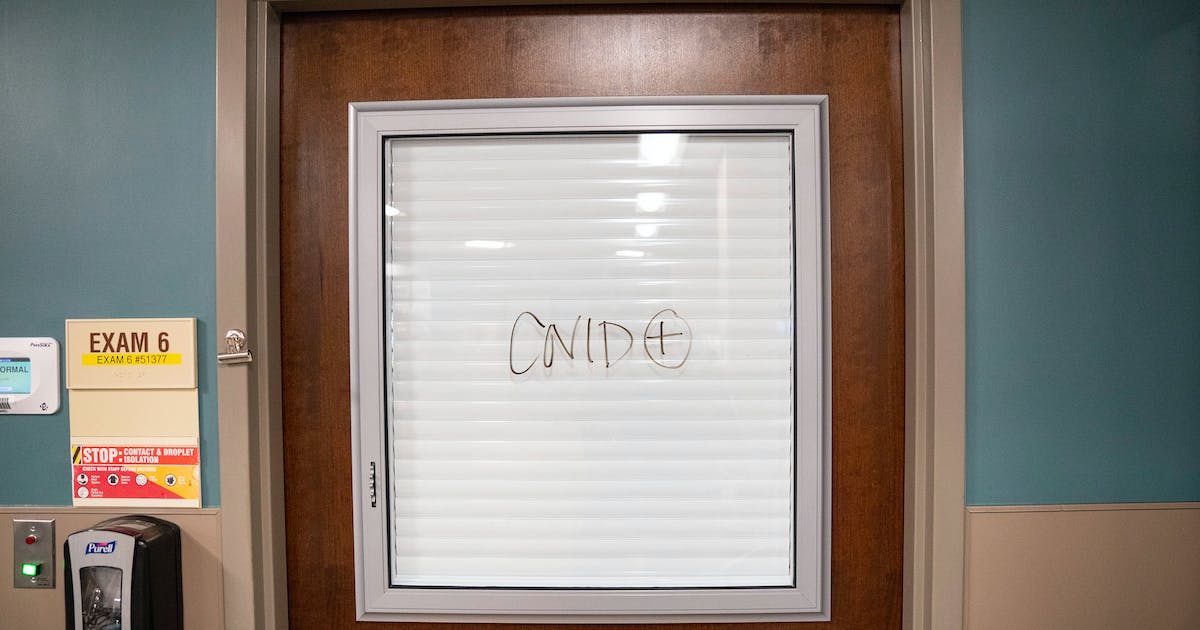Infection
COVID-19 bump followed July 4 holiday in Minnesota
Independence Day proved for the fourth year in a row to be a germ-mixing opportunity that increased COVID-19 cases in Minnesota.
Hospitalizations related to the infectious disease increased in Minnesota from 41 on July 3 to 93 this Monday, and the Metropolitan Wastewater Treatment Plant in St. Paul reported a 31% increase over the past week in viral material in sewage samples.
While the post-holiday bump is not necessarily a sign of another COVID-19 surge, health officials said it is a reminder of the infection risk. Nationally, hospitalizations increased more than 12% over the last reporting week, when the new EG.5 coronavirus variant became the dominant source of COVID-19.
The increase needs to be kept in perspective, because 9,000 U.S. COVID-19 hospitalizations were reported in the final week of July compared to 44,000 during the same week last year, said Michael Osterholm, director of the University of Minnesota’s Center for Infectious Disease Research and Policy.
“Do I think there will be another big surge? I don’t,” he said. “I still sleep with one eye open with this virus, because we have to look at these mutations that are occurring and these variants. But I just don’t see a variant yet that is going to get us back to anything the size of the previous big peaks.”
Minnesota had five times as many hospitalizations at this point last summer than it does now. Cases requiring intensive care dropped to one on July 9, though they have since increased to nine, according to Thursday’s weekly state COVID-19 situation update.
Any increase in small numbers will appear large percentagewise, so for now “we won’t speculate whether this is a harbinger of things to come for this fall,” said Kathy Como-Sabetti, a manager of the infectious disease epidemiology section of the Minnesota Department of Health.
The latest numbers are still “a good reminder for people to stay up to date with their COVID-19 vaccines and to test if they have symptoms as COVID-19 is still around,” she said.
EG.5 was found in May in Minnesota through genetic sequencing of a sampling of positive coronavirus specimens at the state’s public health lab. The variant made up 7% of viral samples tested in mid-July, trailing various mutations of the XBB variant as the dominant cause of COVID-19 in Minnesota this summer.
Federal regulators are expected in the coming weeks to approve a new vaccine booster that targets the XBB variant of the coronavirus. EG.5 descends from XBB, so the new booster is expected to offer protection even if there is a shift in the dominant coronavirus strain.
Osterholm said he has heard lots of theories, but there isn’t enough evidence to conclude the increase this July is from holiday gatherings or from heat driving people indoors. The increase in COVID is uniform nationally, including in regions with milder temperatures.
“We just have to have a lot of humility and acknowledge we don’t understand completely why case numbers go up,” he said. “People try to make this a seasonal virus. My answer to that is that it occurs in all seasons.”
Osterholm has been recovering from long COVID and fatigue caused by an infection earlier this year. New federal survey data showed that nearly 6% of all Minnesota adults were dealing with active long COVID cases in early July. Nearly 15% of Minnesota adults reported dealing with long COVID at some point during the pandemic.
The Metropolitan Wastewater Treatment Plant in St. Paul reported a 31% increase over the past week in viral material in sewage samples. While that was largely driven by an elevated reading on one day, which could be an anomaly, viral levels had already been on the rise since near-record-low readings in late June.
Public health officials don’t expect a surge of COVID-19, which is no longer a federally designated public health emergency. However, they are planning to promote new vaccination opportunities this fall — anticipating federal approval of boosters that target the dominant XBB strain of the coronavirus.
It’s also a good reminder for people to stay up to date with their COVID-19 vaccines and to test if they have symptoms as COVID-19 is still around.” – Kathy Como-Sabetti, Health Program Manager Senior, IDEPC (Infectious Disease Epidemiology, Prevention and Control)

